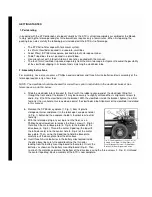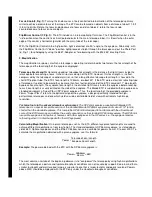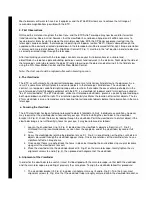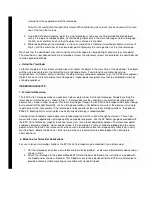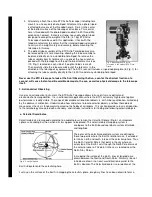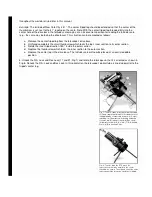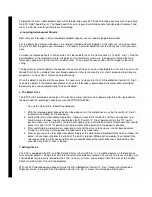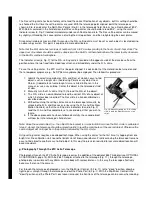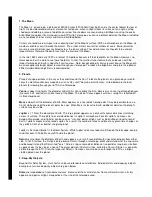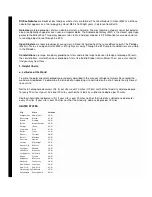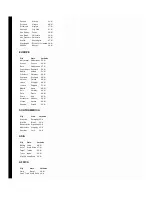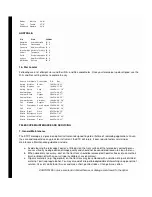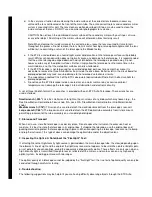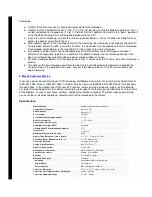
1. The Moon
The Moon is, on average, a distance of 230,000 miles (370,000km) from Earth and is the easiest object to view at
night. It is best observed during its crescent or half phase, when sunlight strikes its surface at an angle, casting
shadows and adding a sense of depth to your view. No shadows are seen during a full Moon, causing the overly
bright Moon to appear flat. Using your new ETX Astro Telescope, you can see brilliant detail on the Moon, including
many hundreds of lunar craters and maria, described below:
Craters are round meteor impact sites covering most of the Moon's surface. With no atmosphere on the Moon, no
weather conditions exist to erode the craters. Thus, lunar craters can last for millions of years. Maria (plural for
mare) are smooth, dark areas scattered across the lunar surface. These dark areas are thought to be ancient
impact craters that were filled with lava from the interior of the Moon.
In the late 1960's and early 1970's, a total of 12 Apollo astronauts left their footprints on the Moon. However, no
telescope on Earth is able to see these footprints. In fact, the smallest lunar feature that can be seen with the
largest telescope on Earth is about half a mile across. Note: Except during its early crescent phase, the Moon can
be an exceptionally bright object to view through your telescope. To reduce the brightness and glare the optional
#905 Variable Polarizing Filter is recommemded.
2. Planets
Planets change positions in the sky as they orbit around the Sun. To locate the planets on a given day or month,
consult a monthly astronomy magazine, such as
Sky and Telescope
or
Astronomy
. Listed below are the best
planets for viewing through your ETX Astro Telescope.
Venus
is about nine-tenths the diameter of Earth. As Venus orbits the Sun, observers can see it go through phases
(crescent, half, and full) much like those of the Moon. The disk of Venus appears white as sunlight is reflected off
its thick cloud cover.
Mars
is about half the diameter of Earth. Mars appears as a tiny reddish-orange dot. It may be possible to see a
hint of white at one of the planet's polar ice caps. When Mars is closest to Earth, additional detail on the planet's
surface may be visible.
Jupiter
is 11 times the diameter of Earth. This large planet appears as a disk with several dark lines stretching
across its surface. These dark lines are cloud bands in Jupiter's atmosphere. Four of Jupiter's 16 moons (lo,
Europa, Ganymede, and Callisto) can be seen as "star-like" points of light. Just as Earth's Moon travels around
Earth, Jupiter's moons circle around Jupiter. As a result, the number of moons visible at any given time changes as
they orbit in front of, or behind, the giant planet.
Jupiter is the largest planet in the Solar System. While Jupiter's disk may look small through the telescope, keep in
mind that over 1000 Earths could fit inside the planet.
Saturn
is nine times the diameter of Earth and appears as a small, round disk with rings extending out from either
side. In 1610, Galileo, the first person to observe Saturn through a telescope, didn't understand what the rings were
and believed instead that Saturn had "ears." Saturn's rings are made of billions of ice particles ranging in size from
a speck of dust to the size of a house. The major division in Saturn's rings, called the Cassini Division, is generally
visible through the ETX. Titan, the largest of Saturn's 18 moons can also be seen through the ETX as a bright,
starlike object near the planet.
3. Deep-Sky Objects
Beyond Our Solar System, star charts can be used to locate constellations, individual stars and deep-sky objects.
Examples of various deep-sky objects are given below:
Stars
are large globes of incandescent gases. Because of their vast distances from our Solar System, all stars
appear as pinpoints of light, irrespective of the size of the telescope used.
Summary of Contents for ETX Series
Page 20: ......


